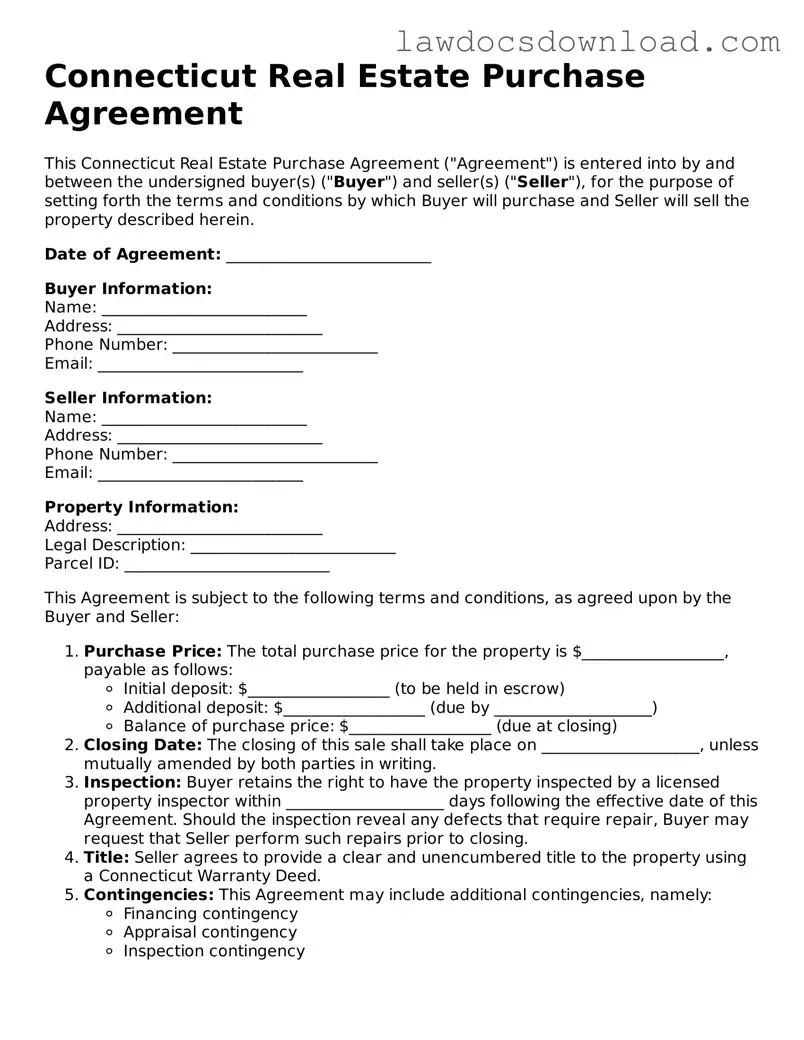Connecticut Real Estate Purchase Agreement
This Connecticut Real Estate Purchase Agreement ("Agreement") is entered into by and between the undersigned buyer(s) ("Buyer") and seller(s) ("Seller"), for the purpose of setting forth the terms and conditions by which Buyer will purchase and Seller will sell the property described herein.
Date of Agreement: __________________________
Buyer Information:
Name: __________________________
Address: __________________________
Phone Number: __________________________
Email: __________________________
Seller Information:
Name: __________________________
Address: __________________________
Phone Number: __________________________
Email: __________________________
Property Information:
Address: __________________________
Legal Description: __________________________
Parcel ID: __________________________
This Agreement is subject to the following terms and conditions, as agreed upon by the Buyer and Seller:
- Purchase Price: The total purchase price for the property is $__________________, payable as follows:
- Initial deposit: $__________________ (to be held in escrow)
- Additional deposit: $__________________ (due by ____________________)
- Balance of purchase price: $__________________ (due at closing)
- Closing Date: The closing of this sale shall take place on ____________________, unless mutually amended by both parties in writing.
- Inspection: Buyer retains the right to have the property inspected by a licensed property inspector within ____________________ days following the effective date of this Agreement. Should the inspection reveal any defects that require repair, Buyer may request that Seller perform such repairs prior to closing.
- Title: Seller agrees to provide a clear and unencumbered title to the property using a Connecticut Warranty Deed.
- Contingencies: This Agreement may include additional contingencies, namely:
- Financing contingency
- Appraisal contingency
- Inspection contingency
Both Buyer and Seller hereby agree to the terms and conditions set forth in this Agreement and shall cooperate fully in executing any additional documents necessary to complete the sale transaction.
In Witness Whereof, the parties have executed this Agreement as of the last date signed below.
Buyer's Signature: __________________________ Date: ________________
Seller's Signature: __________________________ Date: ________________
This Agreement is made in accordance with the laws of the State of Connecticut and shall be interpreted and enforced according to those laws.
